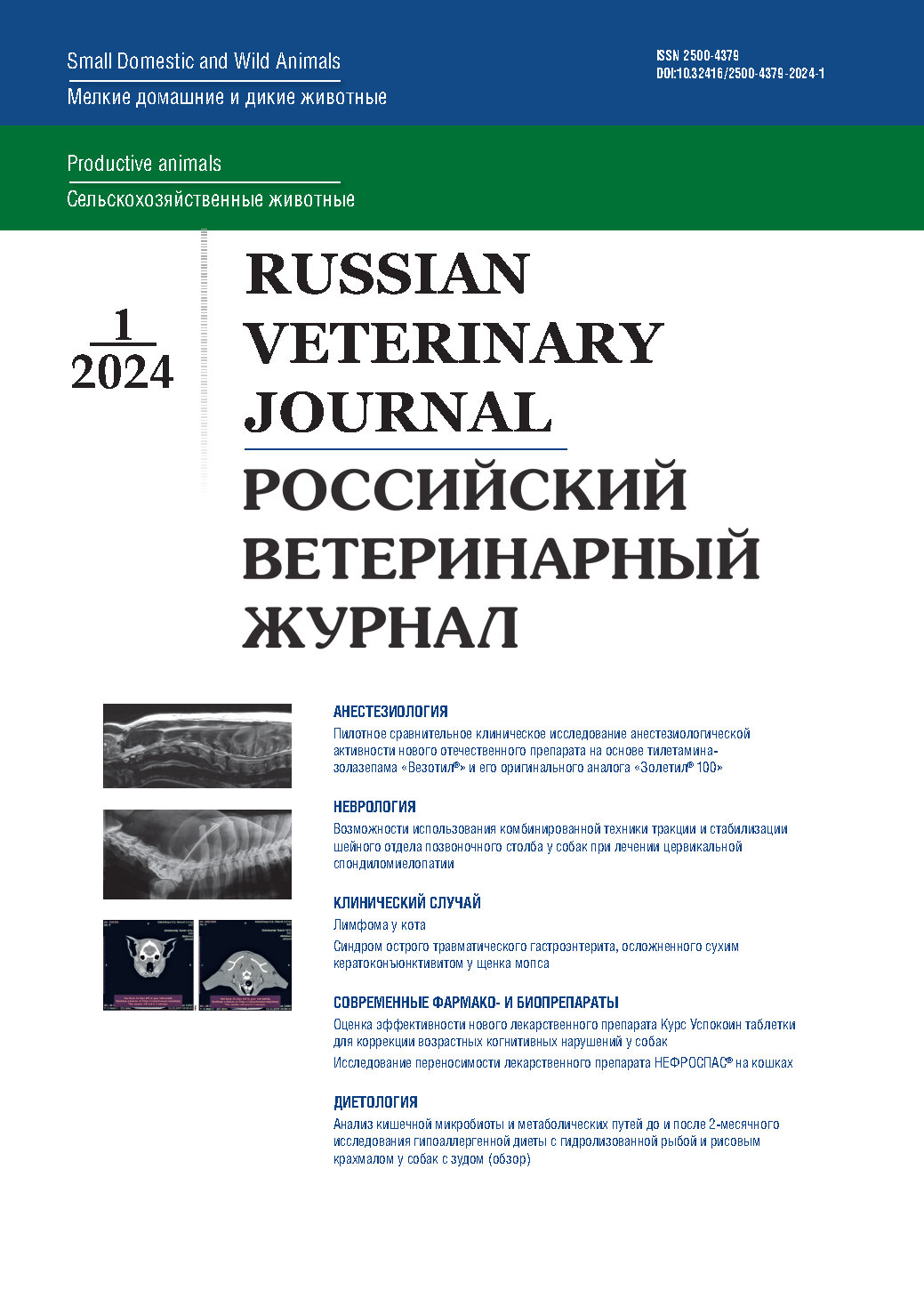CSCSTI 68.41
Intestinal microbiota alterations were described in allergic individuals and may improve with diets. Farmina Ultra Hypo (FUH), a hydrolyzed fish/rice starch hypoallergenic diet, is able to improve clinical signs in allergic dogs. Study objectives were to determine microbiota differences in allergic dogs before and after feeding with FUH for eight weeks. Forty skin allergic dogs were evaluated clinically before and after the diet. Unresponsive dogs were classified as canine atopic dermatitis (CAD); responsive dogs relapsing after challenge with previous foods were classified as being food reactive (AFR), and those not relapsing as doubtful (D). Sequencing of feces collected pre- and post-diet was performed, with comparisons between and within groups, pre- and post-diet, and correlations to possible altered metabolic pathways were sought. Microbiota in all dogs was dominated by Bacteroidota, Fusobacteriota, Firmicutes and Proteobacteria, albeit with large interindividual variations and with some prevalence changes after the diet. In general, bacteria producing short-chain fatty acids were increased in all samples. CAD dogs showed pre-and post-diet microbiota patterns different from the other two groups. Bacteria taxa were enriched post-diet only in the AFR group. Changes in metabolic pathways were observed mainly in the CAD group. FUH may be able to improve intestinal microbiota and thus clinical signs of skin allergy.
dog, allergic dermatitis, food allergy, pruritus, skin, canine atopic dermatitis, intestinal microbiota, metabolic pathways, hydrolyzed protein, rice starch
1. Spiska net








